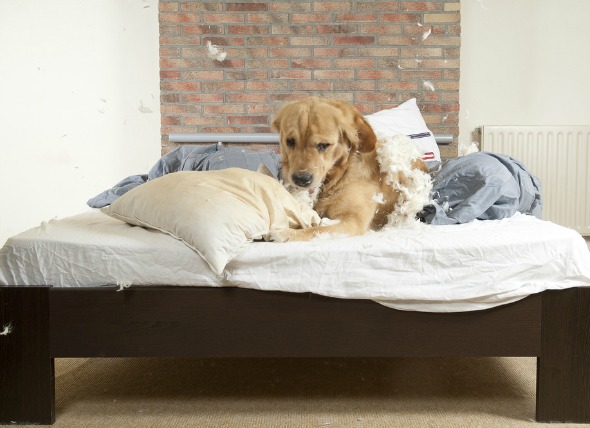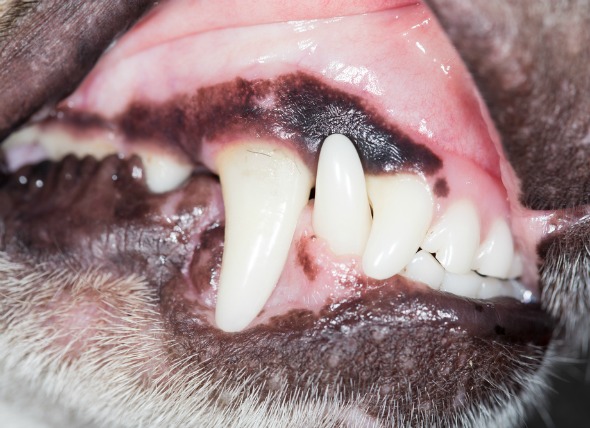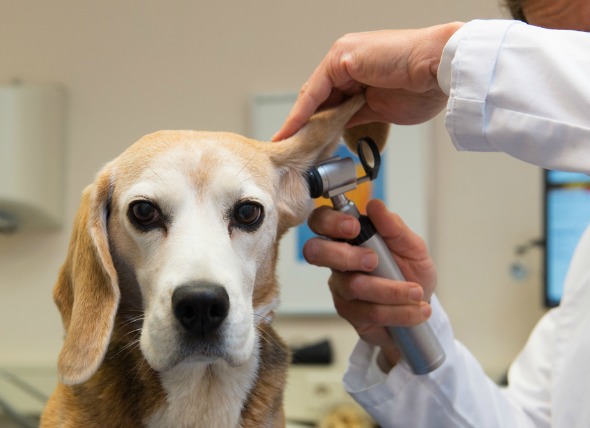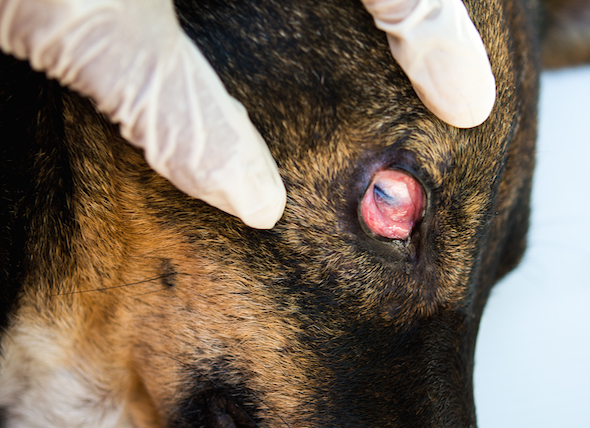

It is normal for dogs to chew on things, dig, and be protective over their territory. Dogs are diagnosed with destructive tendencies when they destroy things we don’t want them to, such as furniture, shoes, doors, or carpets. Not all destructive behavior is the same, however. When a dog chews on the wrong things or digs in the wrong place but does not have any other symptoms, this is considered a primary destructive behavior. Dogs that have other symptoms like anxiety, fear, or aggression in combination with their destructive behavior are diagnosed with secondary destructive behavior. Both types of destructive behavior can lead to problems with other organs, such as teeth, skin, the stomach, or intestines, if left untreated.
Your veterinarian will need a complete medical and behavior history so that patterns can be established, and so that physical conditions that might be linked to the behavior can be ruled out or confirmed. Things your veterinarian will need to know include your dog's training history, level of daily physical activity, when the destruction first started, how long it has been going on, what events seem to set off the destruction and whether or not your dog is alone when the destruction takes place. It is also important to tell your veterinarian whether the destruction has gotten worse, better, or remained the same since it was first noticed.
During the physical examination, your veterinarian will be looking for signs that your dog has a medical problem that might be causing the behavior. A complete blood count, biochemical profile, and urinalysis will be ordered. These results of these testes will tell your veterinarian whether there are any problems with your dog's internal organs. A blood thyroid hormone level may also be ordered so that your veterinarian can determine if your dog's thyroid level is low or high. Sometimes, imbalances of thyroid hormone can add to destructive behavior.
If your dog is eating items that are not food, a condition referred to as pica, your veterinarian will order blood and stool (fecal) tests to specifically test for disorders or nutritional deficiencies that would lead to pica. The results of these tests will indicate whether your dog is able to digest its food properly and is absorbing the nutrients that it needs from the food. If your dog is older when these behavioral problems start, your veterinarian may order a computed tomography (CT) scan or a magnetic resonance image (MRI) of your dog's brain. These tests will allow your veterinarian to visually examine the brain and its functioning ability, making it possible to determine if there is a brain disease or a tumor that is causing the behavior problems. If no medical problem is found, your dog will be diagnosed with having a behavioral problem.
If a medical problem has been confirmed, that problem will be treated first. Usually, treating the illness will resolve the behavioral problem. If your dog does not have a medical problem, your veterinarian will develop a plan to treat your dog's behavior problem. In most cases, a combination of training and medication will be necessary. Medication alone does not usually solve the problem.
For primary destructive behaviors, your veterinarian will help you to come up with a plan for directing your dog’s destructive actions towards objects that are appropriate. This will help you train your dog to chew on the things that you approve of, and prevent your dog from chewing on or damaging the wrong things. Pets that have primary destructive behaviors do not need medication. In combination with this type of prevention training.
Treatment of secondary destructive behaviors will involve a combination of medications and training. Your veterinarian may choose to prescribe an anti-anxiety medication to help your dog to respond more quickly to the training. You and your veterinarian will also develop a training plan to help your dog learn how to behave in a more appropriate way. Once your dog has learned not to destroy things, you may be able to stop the medication. However, some dogs need to be medicated for anxiety for some time to help them to get over their destructive behavior.
When you first start the training and medication program, your veterinarian will want to talk with you frequently to make sure that things are going well between you and your dog and possible anyone else in the home. It is important that you give medications exactly as directed by your veterinarian. If your dog has been prescribed medication, your veterinarian may want to follow-up with complete blood counts and biochemistry profiles to make sure the medications are not adversely affecting any of your dog's internal organs. Make sure that you do not give any other medications to your dog while it is under the veterinarian's care unless you have first consulted with your doctor.
It is most important that you be patient with your dog while it is learning not to be destructive. This can be a slow process and may take several months or more. Some dogs have more anxiety and reluctance to learn new behaviors and may need long term medication and training until they feel confident on their own.
It is important to start early and to be consistent with training. Early, intensive training, beginning at puppy age, will help your dog to understand what it can and cannot chew on, where it can go, where it can dig, etc. Your veterinarian can help you develop a training program to teach your dog what it is allowed to chew on and where it is allowed to dig. It is also important to expose your dog to all kinds of people, animals, and situations while it is still young. This will help your dog learn how to behave in all situations. Waiting until your dog is older could bring on excessive shyness, anxiety, and/or protective behaviors that are not appropriate for public places. It is also important to watch your pet carefully for any changes in its behavior and to address the changes immediately. Treating medical or behavioral problems quickly makes them easier to prevent and eliminate.
 Gum Disease in Dogs
Periodontal Disease in Dogs
Periodontal disease i
Gum Disease in Dogs
Periodontal Disease in Dogs
Periodontal disease i
 Ear Hematoma in Dogs
Canine Aural Hematoma
Ear hematomas, also known a
Ear Hematoma in Dogs
Canine Aural Hematoma
Ear hematomas, also known a
 Failure to Absorb Vitamin B12 in Dogs
Cobalamin Malabsorption
Cobalamin malabsorption r
Failure to Absorb Vitamin B12 in Dogs
Cobalamin Malabsorption
Cobalamin malabsorption r
 Poisoning Due to Ingesting Rat Poison in Dogs
Strychnine Poisoning in Dogs
Strychnine is a very
Poisoning Due to Ingesting Rat Poison in Dogs
Strychnine Poisoning in Dogs
Strychnine is a very
 Conjuctivitis (Pink Eye) in Dogs
Conjunctivitis in Dogs
The conjunctiva is the moi
Conjuctivitis (Pink Eye) in Dogs
Conjunctivitis in Dogs
The conjunctiva is the moi
Copyright © 2005-2016 Pet Information All Rights Reserved
Contact us: www162date@outlook.com